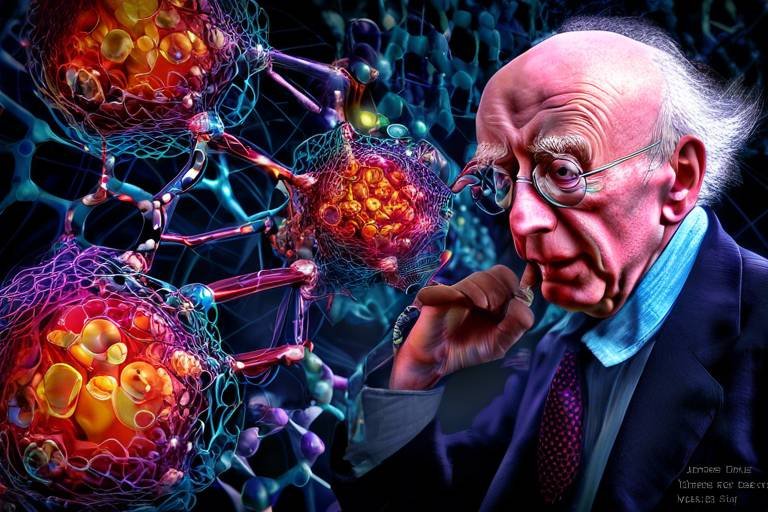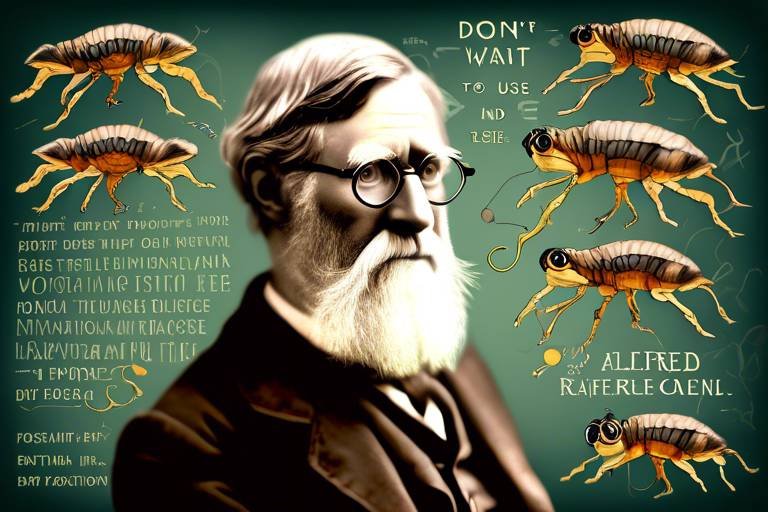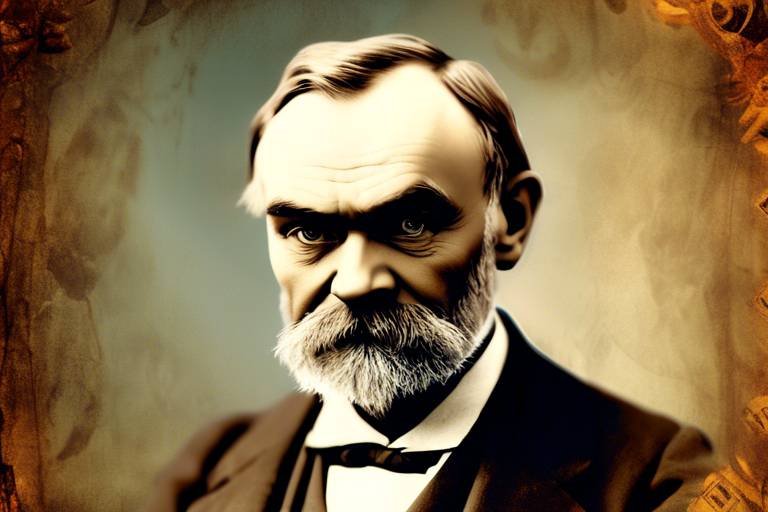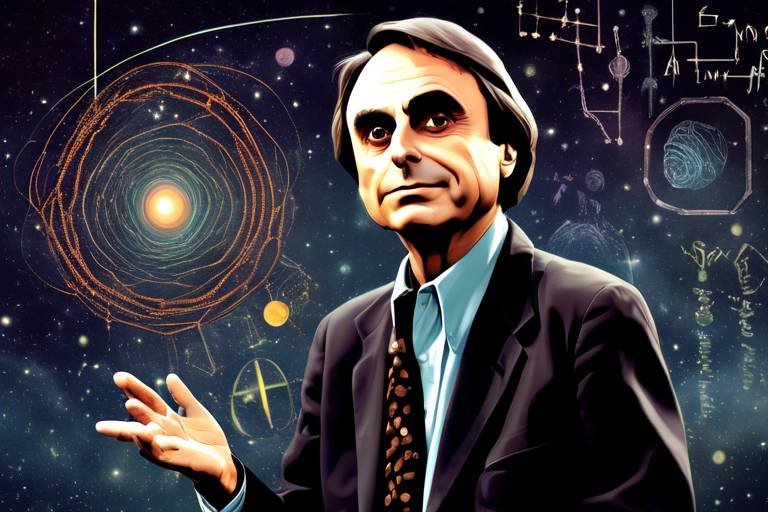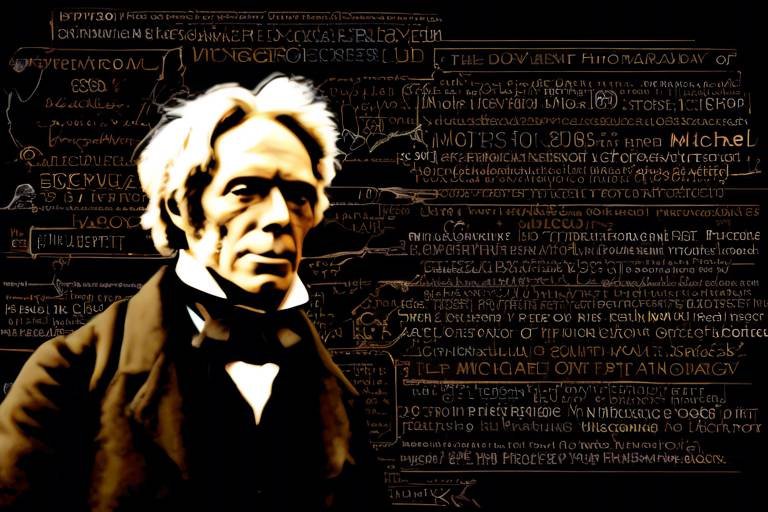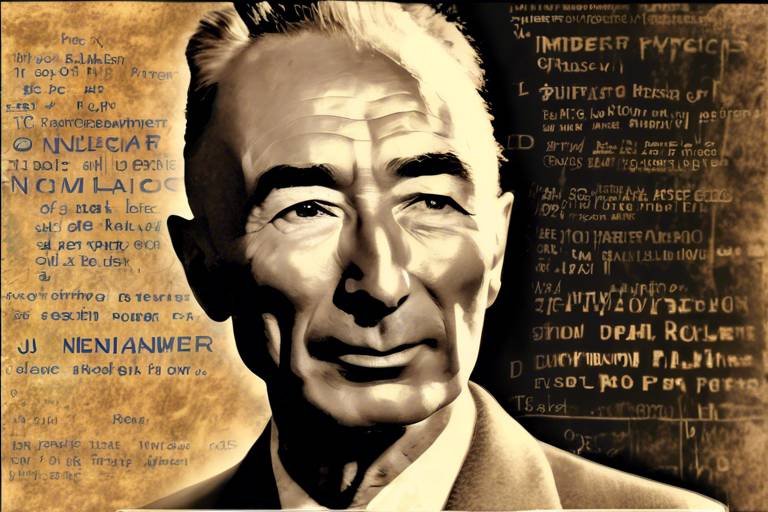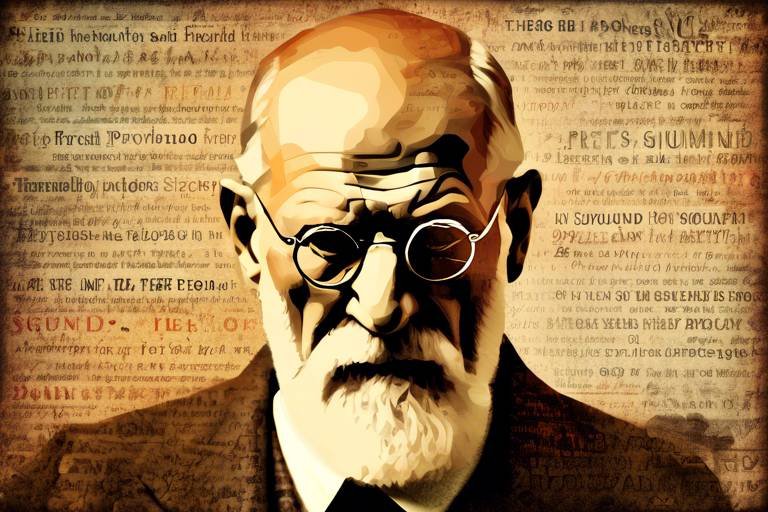The Life of Galileo Galilei and the Scientific Revolution
Galileo Galilei, often heralded as the father of modern science, was a pivotal figure during a time when the world was on the brink of a scientific awakening. Born in Pisa, Italy, in 1564, his life was a tapestry woven with threads of curiosity, innovation, and conflict. The era he lived in was marked by a profound shift in understanding the natural world, which we now refer to as the Scientific Revolution. In this article, we will dive deep into the remarkable journey of Galileo, exploring his early life, groundbreaking contributions to science, and the lasting legacy he left behind.
Galileo's journey began in a modest household, where his father, a musician, instilled a love for mathematics and the arts in him. From a young age, Galileo exhibited a keen interest in the workings of the universe. He pursued his education at the University of Pisa, where he studied medicine but quickly gravitated towards mathematics and physics. This shift was crucial, as it laid the groundwork for his future discoveries. Imagine a young man, sitting in a candlelit room, surrounded by books, pondering the mysteries of the heavens. It was this blend of mathematics, physics, and philosophy that would soon propel him into the annals of history.
Galileo's contributions to science are nothing short of revolutionary. He is best known for his pioneering work in astronomy and his development of the telescope, which allowed him to peer into the cosmos like never before. His observations challenged the prevailing beliefs of his time, particularly the long-held geocentric model, which posited that the Earth was the center of the universe. With a telescope in hand, Galileo became a true cosmic explorer, unveiling secrets that would forever change humanity's understanding of its place in the universe.
The invention of the telescope was a game-changer. With this remarkable device, Galileo made several groundbreaking astronomical observations. Among his most notable discoveries were the moons of Jupiter and the phases of Venus. These observations were not just fascinating; they fundamentally altered the perception of the universe. The telescope acted as a bridge, connecting human curiosity to the vast, uncharted territories of space.
In 1610, Galileo discovered four large moons orbiting Jupiter: Io, Europa, Ganymede, and Callisto. This was monumental! It provided critical evidence against the geocentric model, supporting the heliocentric theory proposed by Copernicus. Imagine the shockwaves this discovery sent through the scientific community and beyond. For centuries, people believed that everything revolved around the Earth. Galileo's findings were like a cosmic slap in the face, forcing society to reconsider its long-held views.
Another striking observation was that of Venus's phases. Galileo noted that Venus exhibited a full cycle of phases, similar to the Moon. This was groundbreaking evidence that Venus orbited the Sun, thus further validating the heliocentric model. It was akin to finding a missing piece in a grand cosmic puzzle, one that challenged the very fabric of established beliefs.
However, Galileo's journey was not without its challenges. His conflict with the Catholic Church exemplifies the tension between science and religion during the Scientific Revolution. As he began to publish his findings, he faced fierce opposition from religious authorities who felt threatened by his ideas. In 1616, the Church warned him not to teach the heliocentric theory as fact, and by 1633, he was tried by the Roman Inquisition and ultimately condemned. Picture Galileo, a man of science, standing before the Church, defending the truth of his discoveries while facing the wrath of an institution that had dominated thought for centuries. It was a clash of titans—faith versus reason.
Despite the trials he faced, Galileo's legacy endures through his profound contributions to modern science. His methodologies, emphasizing observation and experimentation, laid the groundwork for the scientific method we use today. He is often regarded as the father of modern science, a title he rightfully earned through his relentless pursuit of knowledge.
Galileo's influence can be seen in the works of countless scientists who followed in his footsteps. His insistence on empirical evidence and logical reasoning set the stage for future discoveries in physics and astronomy. It's like planting a seed that would grow into a towering tree of knowledge, branching out into various fields of science.
Galileo's courage in advocating for scientific truth inspired countless thinkers and scientists, including the likes of Isaac Newton. Newton built upon Galileo's foundational work to further advance scientific knowledge, demonstrating how one man's pursuit of truth can ignite a flame of curiosity in others. Galileo's story is a testament to the power of inquiry and the importance of standing firm in the face of opposition.
- What was Galileo's main contribution to science? Galileo's main contributions include the development of the telescope and his groundbreaking astronomical observations, which challenged the geocentric model of the universe.
- How did Galileo's discoveries impact the Church? Galileo's discoveries led to a conflict with the Catholic Church, which condemned him for advocating the heliocentric theory.
- Why is Galileo considered the father of modern science? Galileo is considered the father of modern science due to his emphasis on observation, experimentation, and the scientific method, which laid the groundwork for future scientific inquiry.

Early Life and Education
Galileo Galilei was born in Pisa, Italy, in the year 1564. From a young age, he exhibited a keen interest in the workings of the natural world, which would later lay the groundwork for his revolutionary contributions to science. His family was not wealthy, but they valued education highly. Galileo's father, Vincenzo Galilei, was a musician and a scholar, which meant that young Galileo was exposed to a rich intellectual environment. This early exposure to mathematics and philosophy significantly shaped his worldview.
At the age of 17, Galileo enrolled at the University of Pisa, where he initially studied medicine. However, his fascination with mathematics and physics soon took precedence. He found himself captivated by the works of great thinkers like Aristotle and Archimedes. It was during this time that he began to question the established beliefs of his predecessors, particularly in the realm of motion and mechanics. His education was a blend of rigorous academic study and personal exploration, which fueled his desire to seek answers to the mysteries of the universe.
Galileo's time at the university was not without its challenges. He faced financial difficulties and had to support himself through tutoring. Despite these obstacles, he excelled in his studies and graduated with a degree in mathematics. His academic journey did not end there; he continued to pursue knowledge and understanding, which would eventually lead him to groundbreaking discoveries.
In the years that followed, Galileo held various academic positions, including a professorship at the University of Padua. Here, he was able to conduct experiments and share his ideas with students. His teaching methods were innovative for the time, as he emphasized the importance of observation and experimentation—principles that would become central to the scientific method. He engaged his students with practical demonstrations, making complex concepts accessible and exciting. This hands-on approach not only captivated his students but also fostered a new way of thinking about science.
Galileo's educational journey was marked by a relentless pursuit of knowledge, a characteristic that defined his entire life. He believed that understanding the laws of nature required more than just theoretical knowledge; it demanded careful observation and experimentation. This conviction would later lead him to challenge the prevailing scientific ideas of his time, ultimately paving the way for the Scientific Revolution.
In summary, Galileo Galilei's early life and education were instrumental in shaping his revolutionary ideas. His background in mathematics and philosophy, coupled with his innovative teaching methods, laid the foundation for his contributions to science. He was not just a passive recipient of knowledge; he was an active seeker of truth, willing to challenge the status quo. This spirit of inquiry and determination would define his legacy and influence generations of scientists to come.
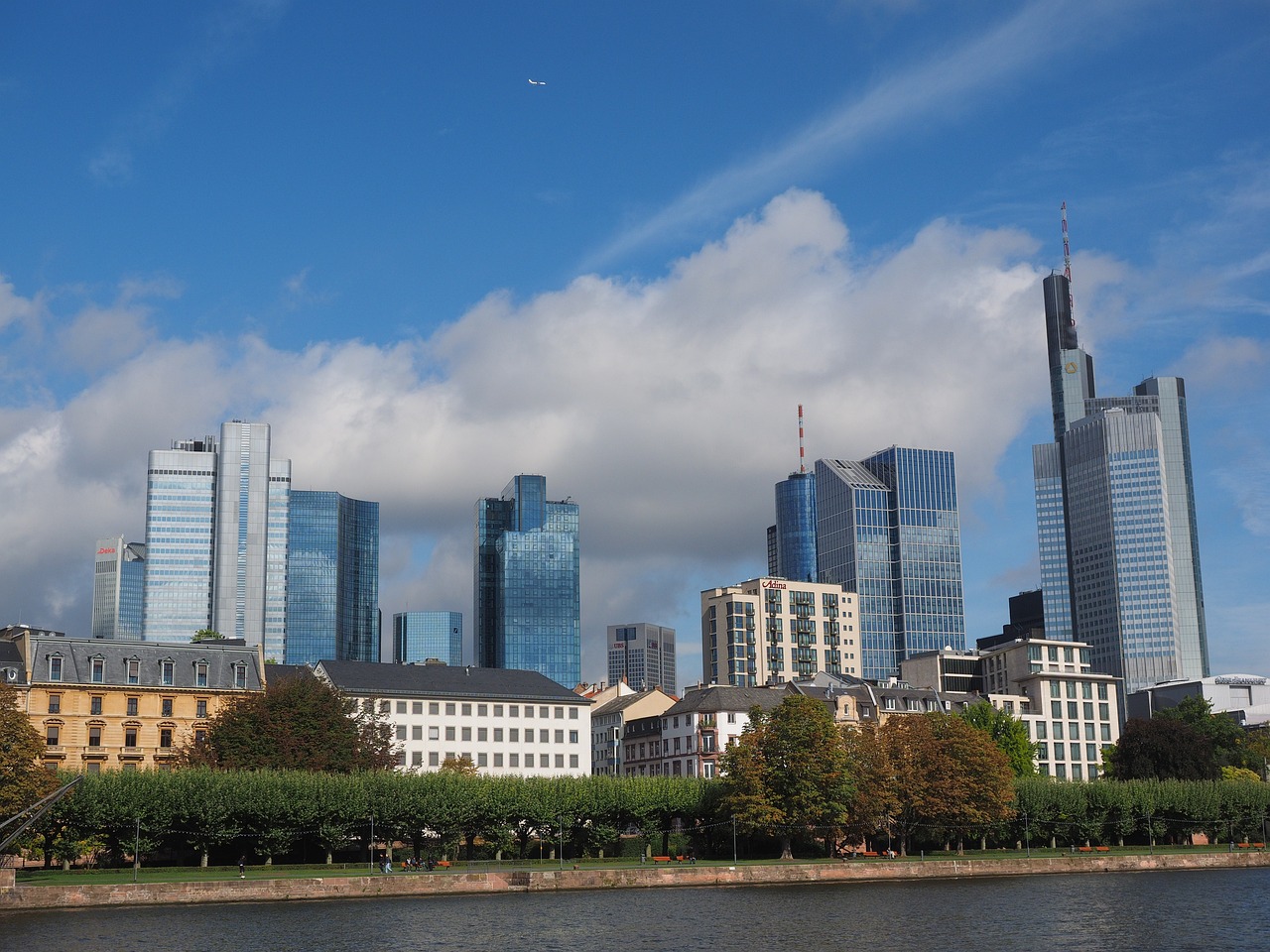
Key Scientific Contributions
Galileo Galilei's contributions to science are nothing short of revolutionary, acting as a catalyst for the Scientific Revolution that transformed our understanding of the universe. His work was a masterful blend of mathematics, physics, and philosophy, which not only challenged the prevailing beliefs of his time but also laid the groundwork for modern scientific inquiry. One of his most significant achievements was the development of the telescope, an instrument that would change the course of astronomy forever. With this newfound ability to observe celestial bodies, Galileo made several groundbreaking discoveries that would forever alter humanity's perception of the cosmos.
Among his most notable findings were the moons of Jupiter and the phases of Venus. These discoveries played a pivotal role in dismantling the long-held geocentric model of the universe, which posited that Earth was the center of all celestial motion. Instead, Galileo's observations provided compelling evidence for the heliocentric theory, which placed the Sun at the center of the solar system. This was a monumental shift in scientific thought, and it was not without controversy.
The invention of the telescope was not merely a technical advancement; it was a revolutionary leap into a new world of understanding. When Galileo turned his telescope to the night sky, he was met with astonishing sights. He discovered the four largest moons of Jupiter—Io, Europa, Ganymede, and Callisto—which he collectively referred to as the Galilean moons. This discovery was groundbreaking because it provided clear evidence that not everything in the universe revolved around the Earth. Instead, it suggested that celestial bodies could orbit other planets, fundamentally challenging the geocentric model.
Galileo's observation of Jupiter's moons was a game-changer. It not only showcased the limitations of the geocentric model but also supported the heliocentric theory proposed by Copernicus. By documenting the movements of these moons, Galileo provided tangible proof that celestial bodies could exist in orbit around other planets, which was a radical idea at the time. This evidence was so compelling that it forced scholars and the Church to reconsider their long-held beliefs about the universe.
Another significant contribution was Galileo's observation of the phases of Venus. Just like the Moon, Venus exhibited a full set of phases, from new to crescent to gibbous, ultimately culminating in a full phase. This observation was crucial because it demonstrated that Venus orbited the Sun, rather than the Earth. Such findings were instrumental in further validating the heliocentric model and underscored the importance of direct observation in scientific inquiry.
Galileo's work did not just stop at celestial observations; he also delved into the realms of kinematics and thermodynamics, laying down principles that would be essential for future scientists. His emphasis on experimentation and observation became foundational to the scientific method, influencing generations to come. The ripple effects of his contributions can be seen not only in astronomy but also in physics, where his principles of motion paved the way for later thinkers like Isaac Newton.
| Contribution | Significance |
|---|---|
| Development of the Telescope | Enabled groundbreaking astronomical observations |
| Discovery of Jupiter's Moons | Provided evidence against the geocentric model |
| Phases of Venus | Supported the heliocentric theory |
In summary, Galileo Galilei's key scientific contributions were transformative, not just for his era but for the centuries that followed. His insatiable curiosity and relentless pursuit of truth paved the way for a new understanding of the universe, establishing principles that remain at the heart of scientific exploration today.
- What was Galileo's most significant contribution? Galileo's invention of the telescope and his subsequent astronomical observations were among his most significant contributions, particularly the discovery of Jupiter's moons and the phases of Venus.
- How did Galileo's work challenge the Church? Galileo's findings contradicted the Church's teachings about the geocentric model, leading to his trial and condemnation for heresy.
- Why is Galileo considered the father of modern science? Galileo is often referred to as the father of modern science due to his emphasis on observation, experimentation, and the scientific method, which have become foundational to scientific inquiry.
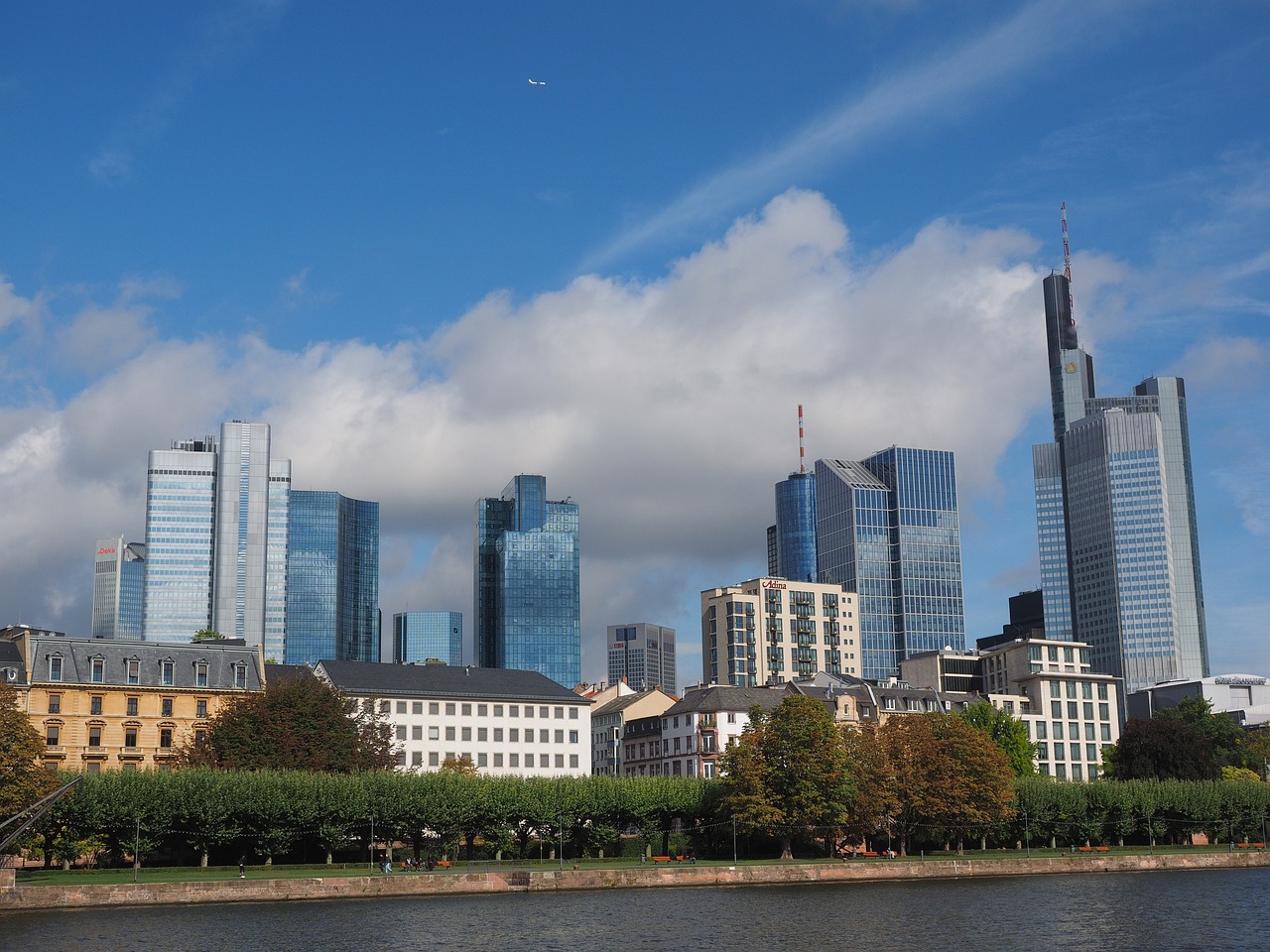
The Telescope and Its Impact
The invention of the telescope marked a pivotal moment in the history of science, and no one exemplified its revolutionary potential better than Galileo Galilei. Imagine a world where the stars were mere pinpricks of light, their mysteries obscured by the limitations of the naked eye. With the telescope, Galileo didn’t just peer into the heavens; he opened a window to a universe brimming with revelations. His enhancements to the telescope were not just technical feats; they were gateways to a new understanding of our place in the cosmos.
In 1609, after hearing of the invention of the telescope in the Netherlands, Galileo crafted his own version. With a magnification of up to 20 times, his telescope was a game-changer. It allowed him to observe celestial bodies with unprecedented clarity. He famously turned his telescope toward the night sky, and what he discovered was nothing short of astonishing. Here are some of the key observations that fundamentally altered our perception of the universe:
- Moons of Jupiter: Galileo discovered four large moons orbiting Jupiter, now known as the Galilean moons: Io, Europa, Ganymede, and Callisto. This was monumental evidence that not everything revolved around the Earth, challenging the long-accepted geocentric model.
- Phases of Venus: He observed that Venus exhibited phases similar to the Moon, which could only be explained if Venus orbited the Sun, further supporting the heliocentric theory.
- Surface of the Moon: Galileo meticulously documented the Moon's surface, revealing mountains and craters, which contradicted the prevailing belief that celestial bodies were perfect and unblemished.
These observations were not merely academic; they had profound implications for humanity's understanding of the universe. By demonstrating that the Earth was not the center of all things, Galileo's findings laid the groundwork for a **paradigm shift** in scientific thought. His work challenged the authority of the Church, which had long upheld the geocentric view based on Aristotelian principles. The telescope became a symbol of the Scientific Revolution, illustrating how technology could enhance human knowledge and challenge established beliefs.
Moreover, the telescope's impact extended beyond astronomy. It inspired future generations of scientists to embrace observation and experimentation as vital components of scientific inquiry. The very act of looking through a telescope became synonymous with curiosity and discovery. Galileo’s use of the telescope not only reshaped our understanding of the cosmos but also ignited a passion for exploration and questioning that continues to fuel scientific endeavors today.
In conclusion, the telescope was not just an instrument for Galileo; it was a revolutionary tool that shattered the illusions of the past and illuminated the path toward modern science. His contributions remind us that sometimes, all it takes is a new perspective to change the world.
- What was the main purpose of Galileo's telescope?
Galileo's telescope was primarily used to observe celestial bodies, which led to groundbreaking discoveries in astronomy. - How did Galileo's discoveries challenge the Church's beliefs?
Galileo's findings supported the heliocentric model, which contradicted the Church's geocentric view, leading to significant conflict. - What are the Galilean moons?
The Galilean moons are Io, Europa, Ganymede, and Callisto, discovered by Galileo orbiting Jupiter. - Why is Galileo considered the father of modern science?
Galileo is regarded as the father of modern science due to his emphasis on observation, experimentation, and the scientific method.
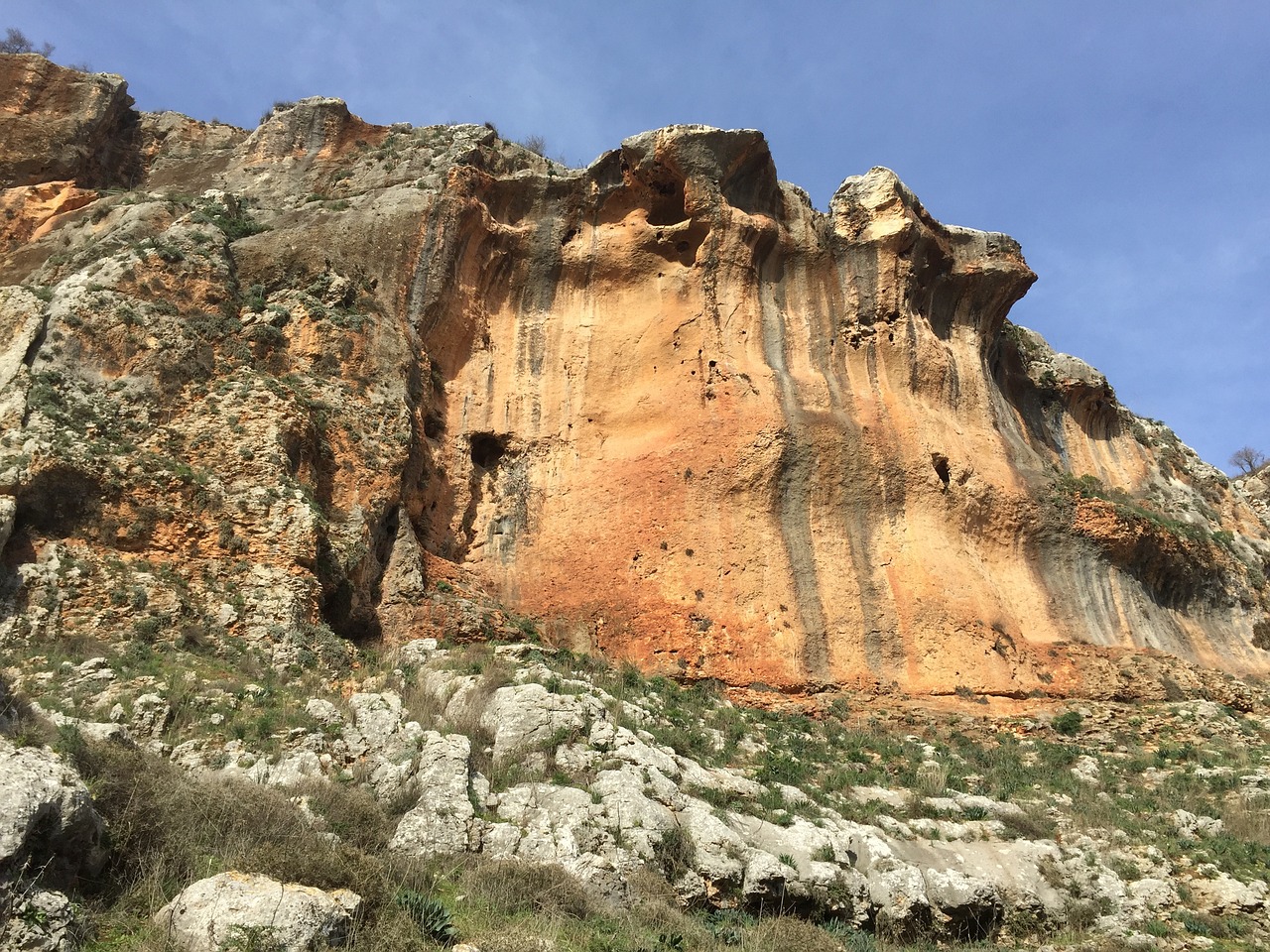
Observations of Jupiter's Moons
When Galileo Galilei turned his newly crafted telescope towards the night sky in 1610, he stumbled upon a **remarkable discovery** that would forever change our understanding of the universe. He observed four celestial bodies orbiting Jupiter, which he later named the Galilean moons: Io, Europa, Ganymede, and Callisto. This was more than just a casual observation; it was a pivotal moment in the history of astronomy that provided **critical evidence** against the long-held geocentric model of the universe, which placed Earth at the center of everything. Instead, these moons showcased that not everything revolved around our planet, supporting the heliocentric theory proposed by Copernicus.
Galileo’s observations were not merely about counting moons; they were a **bold statement** against centuries of established thought. He meticulously documented his findings, noting how these moons changed positions relative to Jupiter over just a few nights. This movement was significant because it illustrated that celestial bodies could orbit something other than Earth, challenging the very fabric of contemporary cosmology. To put it simply, it was as if Galileo had pulled back the curtain on a grand cosmic stage, revealing a complex play of celestial mechanics that had previously gone unnoticed.
Imagine standing under a starry sky, and suddenly realizing that you’re not the center of the universe; that’s what Galileo did. His findings prompted questions that had never been asked before. How could the Earth be the center if other celestial bodies had their own orbits? This realization was not just a scientific breakthrough; it was a **philosophical revolution**. The implications were enormous, leading to a shift in how humanity viewed its place in the cosmos.
To further illustrate the significance of his discovery, let’s take a look at the Galilean moons:
| Moon | Diameter (km) | Notable Feature |
|---|---|---|
| Io | 3,643 | Most volcanically active body in the solar system |
| Europa | 3,121 | Possesses a subsurface ocean, potential for life |
| Ganymede | 5,268 | Largest moon in the solar system |
| Callisto | 4,821 | Heavily cratered, oldest surface in the solar system |
Galileo's observations of these moons were not just about their physical characteristics; they were about the **deeper implications** of what they represented in the context of the universe. His work paved the way for future astronomers and scientists to question established norms and seek truth through observation and evidence. In a world where the Church held significant sway over scientific thought, Galileo's findings were like a spark in a dry field, igniting a movement toward enlightenment and reason.
In conclusion, Galileo's observations of Jupiter's moons were a **turning point** in science. They challenged the status quo, opened the door to new ideas, and fundamentally changed the way humanity understood the cosmos. His courage to pursue the truth, despite opposition, continues to inspire scientists to this day.
- What are the Galilean moons? The Galilean moons are Io, Europa, Ganymede, and Callisto, discovered by Galileo Galilei in 1610.
- Why are Galileo's observations significant? They provided evidence against the geocentric model of the universe and supported the heliocentric theory.
- What did Galileo use to observe Jupiter's moons? He used a telescope that he crafted himself, which was a revolutionary tool at the time.
- How did the Church react to Galileo's findings? The Church opposed his findings, leading to his trial and condemnation for heresy.
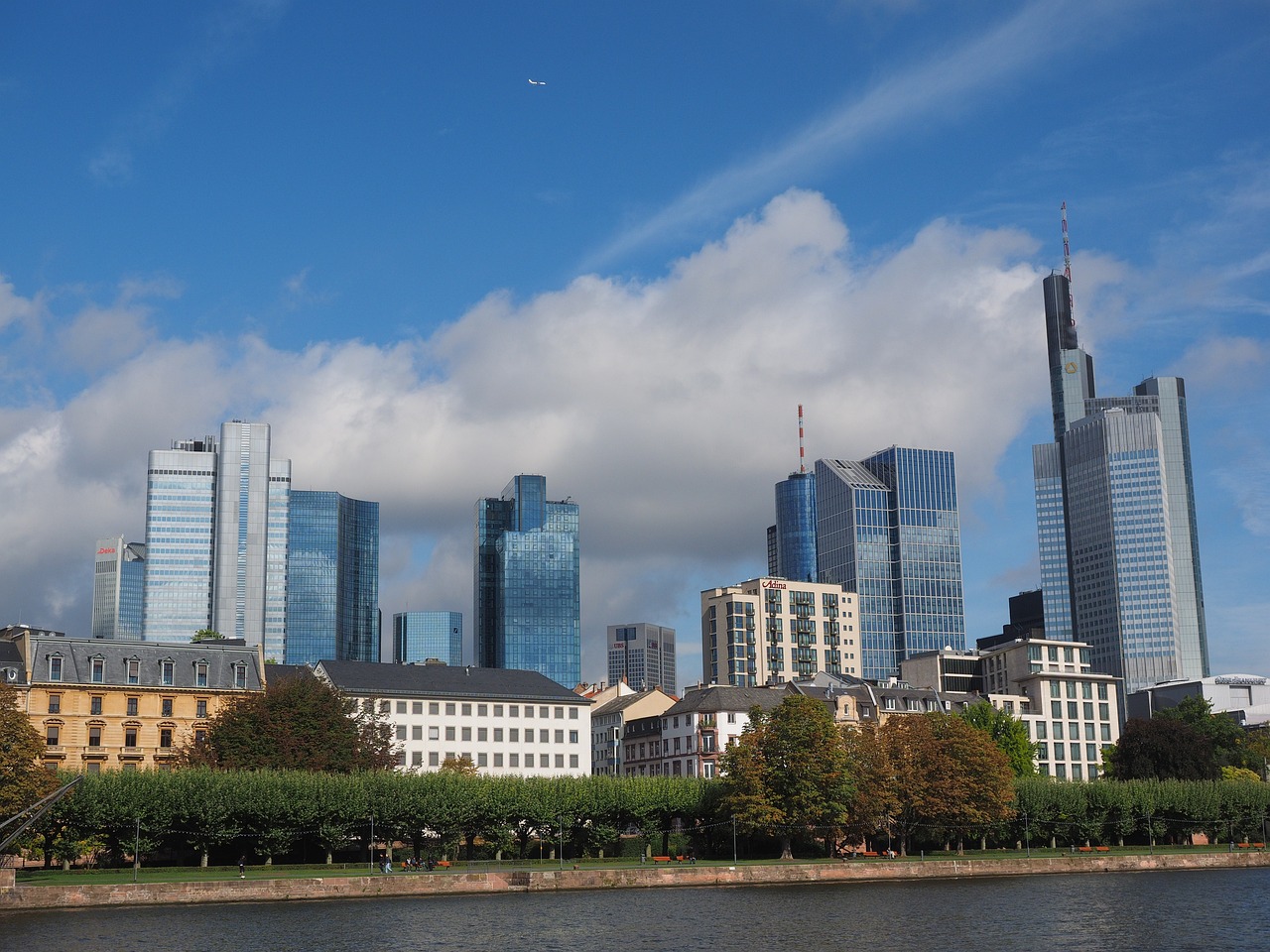
Phases of Venus
The are a magnificent spectacle that not only dazzle the eyes but also serve as a pivotal milestone in the history of astronomy. When Galileo turned his newly crafted telescope towards the heavens, he discovered that Venus exhibited a series of phases much like our Moon. This observation was not just a mere curiosity; it was a groundbreaking revelation that challenged the long-standing geocentric model of the universe, which posited that all celestial bodies revolved around the Earth.
Before Galileo's time, the prevailing belief was that the Earth was the center of the universe, a notion deeply rooted in both scientific thought and religious doctrine. However, the phases of Venus provided compelling evidence that contradicted this view. As Venus orbits the Sun, it transitions through a cycle of phases: from a bright crescent to a full disc. This cycle can be summarized in the following stages:
- Crescent Phase: When Venus is positioned between the Earth and the Sun, it appears as a thin crescent.
- First Quarter: As Venus moves in its orbit, it becomes half illuminated.
- Full Phase: When Venus is on the opposite side of the Sun from the Earth, it shines brightly as a full disc.
- Last Quarter: The cycle concludes as Venus returns to its crescent form.
This sequence of phases was crucial in supporting the heliocentric theory proposed by Copernicus, which stated that the planets, including Earth, revolve around the Sun. Galileo's observations of Venus demonstrated that it could not possibly orbit the Earth, as such a phenomenon would not allow for the full range of phases that he observed. Instead, it became evident that Venus, like the Earth, was a planet that orbited the Sun.
The implications of these findings were revolutionary. They not only provided a clearer understanding of the solar system but also ignited a fierce debate between science and religion. The Catholic Church, which upheld the geocentric model, found itself at odds with Galileo's discoveries. The phases of Venus became a symbol of the struggle for scientific truth against dogmatic beliefs, highlighting the tension that existed during the Scientific Revolution.
In summary, the phases of Venus are more than just a fascinating astronomical phenomenon; they represent a pivotal moment in the evolution of scientific thought. Galileo's keen observations and fearless advocacy for the heliocentric model paved the way for modern astronomy, inspiring future generations to seek the truth about our universe.
- What are the phases of Venus? The phases of Venus refer to the different appearances of the planet as it orbits the Sun, ranging from crescent to full.
- Why are the phases of Venus important? They provide evidence against the geocentric model and support the heliocentric theory, fundamentally changing our understanding of the solar system.
- How did Galileo observe the phases of Venus? Using his improved telescope, Galileo was able to observe the varying shapes of Venus as it moved in its orbit.
- What impact did Galileo's findings have? His discoveries challenged established beliefs and contributed to the Scientific Revolution, influencing future scientists and thinkers.
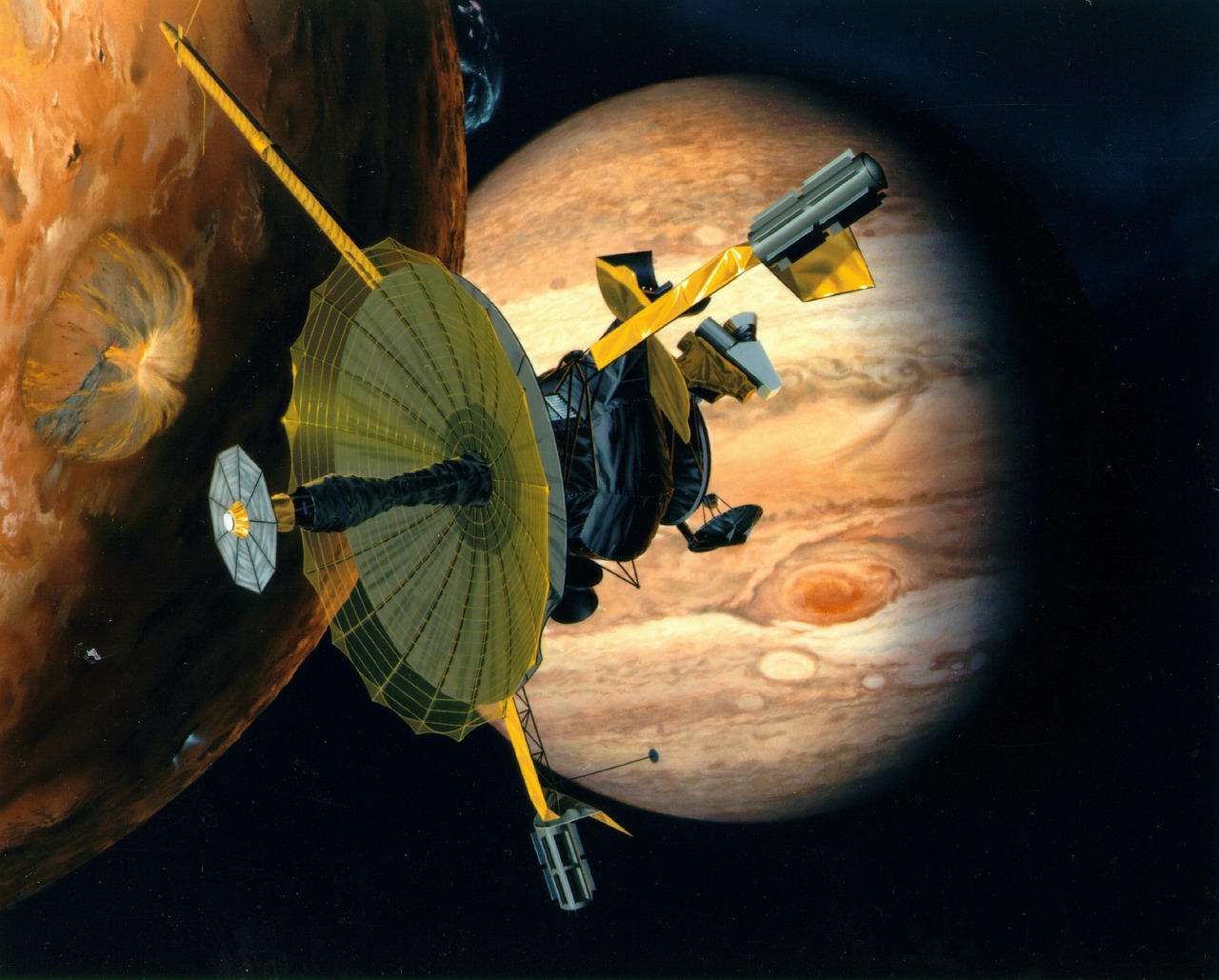
Galileo and the Church
Galileo's relationship with the Catholic Church is a fascinating and tumultuous chapter in the history of science. As he championed the heliocentric model, which posited that the Earth and other planets revolved around the Sun, he found himself at odds with the Church's long-standing geocentric view. This conflict wasn't merely a scientific debate; it was a clash of worldviews, where faith and reason collided in a spectacular fashion. Imagine a world where the stars and planets were thought to dance around the Earth, a belief held for centuries. Galileo, with his groundbreaking observations, was like a beacon of light trying to illuminate a dark room filled with misconceptions.
In 1610, Galileo published his findings in a book titled Sidereus Nuncius (Starry Messenger), which detailed his astronomical discoveries through the telescope. This work included observations of the moons of Jupiter and the phases of Venus, both of which provided compelling evidence for the heliocentric theory. However, the Church, seeing these ideas as a direct challenge to its authority and interpretation of scripture, began to take notice. The tension escalated, leading to a series of confrontations that would ultimately culminate in his trial.
In 1616, the Church officially declared the heliocentric theory as heretical, and Galileo was warned not to teach or advocate for it. Despite this admonition, he continued his work, believing that truth and faith could coexist. His determination to pursue knowledge led him to publish Dialogue Concerning the Two Chief World Systems in 1632, a work that presented arguments for both geocentrism and heliocentrism. This publication was the tipping point, provoking the ire of the Church and leading to his trial by the Roman Inquisition in 1633.
During the trial, Galileo was forced to recant his views publicly. He was found guilty of heresy and placed under house arrest for the remainder of his life. This period of confinement was not just a punishment; it was a profound moment of reflection for Galileo. He continued to write and conduct experiments in secret, demonstrating a resilience that would inspire future generations. His struggle against the Church highlighted the broader conflict between science and religion, a theme that resonates to this day.
The legacy of Galileo's confrontation with the Church serves as a reminder of the importance of scientific inquiry and the courage to challenge established norms. His story is not just about a man and an institution; it's about the relentless pursuit of knowledge in the face of adversity. As we look back, we can appreciate how this pivotal moment in history paved the way for the acceptance of scientific thought in Western society.
- What was Galileo's main conflict with the Church?
Galileo's main conflict with the Church arose from his support of the heliocentric theory, which contradicted the Church's geocentric view of the universe. - What were the consequences of Galileo's trial?
After being tried by the Roman Inquisition, Galileo was found guilty of heresy and placed under house arrest for the rest of his life. - How did Galileo's work influence modern science?
Galileo's emphasis on observation and experimentation laid the groundwork for the scientific method, influencing countless scientists and thinkers that followed. - What is the significance of Galileo's legacy?
Galileo's legacy is significant as it represents the struggle for intellectual freedom and the importance of scientific inquiry, inspiring future generations to question and explore the natural world.

Legacy and Influence
Galileo Galilei's legacy is nothing short of monumental. He is often hailed as the father of modern science, a title that reflects his profound impact on the scientific community and the methodologies that underpin modern research. His emphasis on empirical observation and experimentation laid the groundwork for the scientific method, a systematic approach that continues to be the backbone of scientific inquiry today. Imagine a world where theories were based solely on philosophical debate without the rigorous testing that Galileo championed; it would be a vastly different landscape of knowledge.
One of the most significant aspects of Galileo's influence is his ability to challenge the status quo. At a time when the Church held immense power over intellectual thought, Galileo's discoveries forced society to reconsider its understanding of the universe. His work not only advanced the field of astronomy but also ignited a spark of curiosity that would fuel the Renaissance and beyond. The tension between his findings and the prevailing geocentric model created a ripple effect, inspiring future generations to question and explore the unknown.
Galileo's methodologies have inspired countless scientists and thinkers throughout history. His work paved the way for groundbreaking figures like Isaac Newton, who built upon Galileo's principles to further unravel the mysteries of physics. It's fascinating to consider how one man's courage to speak the truth against overwhelming opposition could lead to a cascade of discoveries that shaped our understanding of the natural world. In fact, many modern scientific principles can be traced back to the foundation laid by Galileo.
To illustrate the depth of his influence, let's take a look at some key areas where Galileo's impact is still felt today:
| Area of Influence | Description |
|---|---|
| Astronomy | Galileo's observations with the telescope changed our understanding of celestial bodies and their movements. |
| Physics | His experiments with motion laid the groundwork for Newtonian physics, particularly the laws of motion. |
| Scientific Method | Galileo's insistence on observation and experimentation became a cornerstone of the scientific method used today. |
| Philosophy of Science | His work encouraged a shift from philosophical reasoning to empirical evidence, influencing the philosophy of science. |
Moreover, Galileo's legacy extends beyond the realm of science. His story serves as a powerful reminder of the importance of intellectual freedom and the pursuit of truth. In a world where misinformation can spread like wildfire, his life encourages us to question what we know and to seek evidence before forming conclusions. The courage he displayed in advocating for scientific truth continues to inspire contemporary scientists and thinkers to stand firm in their beliefs, regardless of societal pressures.
In conclusion, Galileo Galilei's contributions to science and his enduring legacy are a testament to the power of curiosity and the relentless pursuit of knowledge. His influence can be seen in various fields, and his methodologies continue to shape the way we approach scientific inquiry. As we navigate the complexities of modern science, we owe a great debt to Galileo, whose life and work remind us that the quest for understanding is a noble and essential endeavor.
- What were Galileo's main contributions to science? Galileo is best known for his improvements to the telescope, his astronomical observations, and his advocacy for the heliocentric model of the solar system.
- How did Galileo's work influence the Scientific Revolution? His emphasis on observation and experimentation challenged the traditional views of the universe, paving the way for modern scientific thought.
- What was Galileo's conflict with the Catholic Church? Galileo's support for the heliocentric model led to his trial and condemnation by the Church, highlighting the tension between science and religion during that era.
- Why is Galileo considered the father of modern science? His methodologies and insistence on empirical evidence laid the foundation for the scientific method, influencing countless scientists who followed.
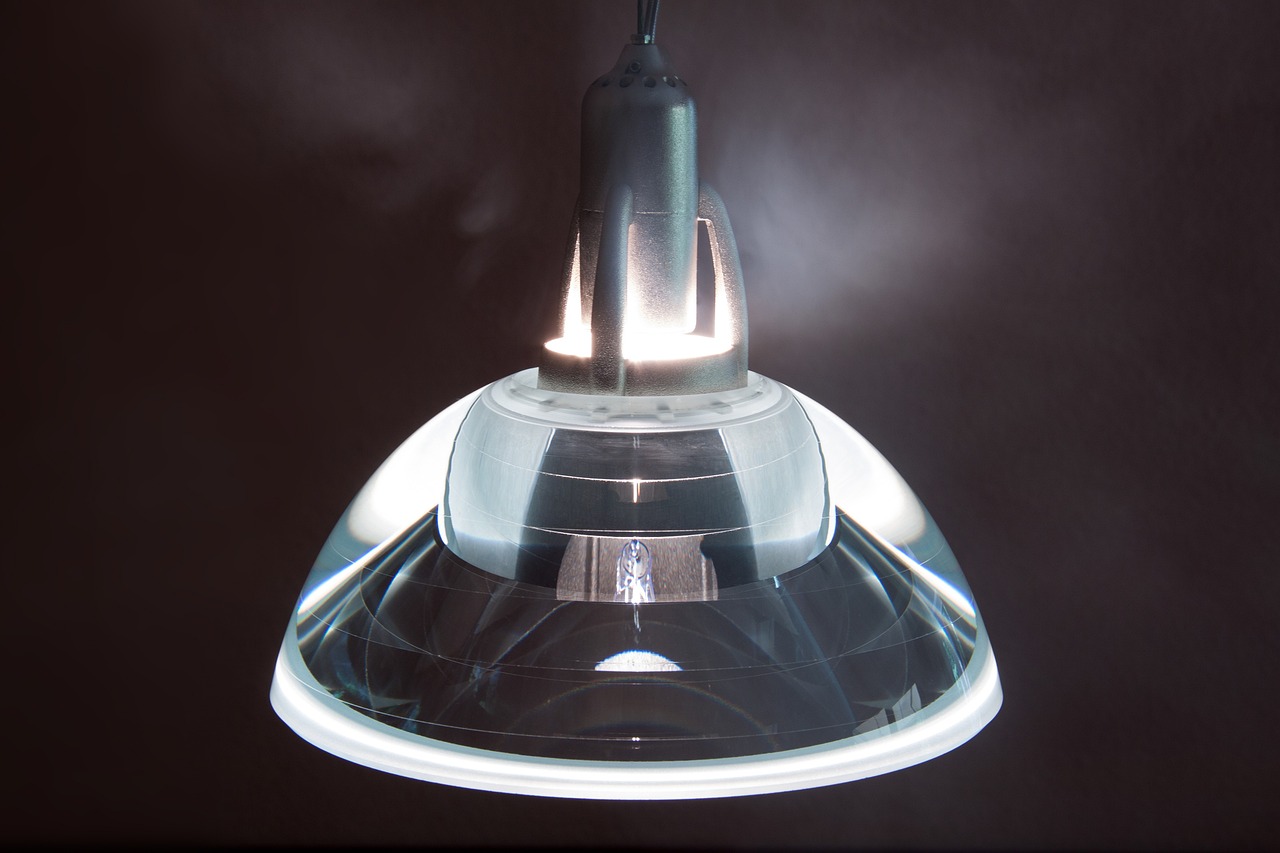
Impact on Modern Science
Galileo Galilei is often hailed as the father of modern science, and for good reason. His approach to scientific inquiry was revolutionary, shifting the focus from philosophical speculation to empirical observation and experimentation. This change was like switching on a light in a dark room; it illuminated the path for future generations of scientists. Before Galileo, many accepted ideas were based solely on ancient texts and the authority of scholars. However, Galileo challenged this notion, advocating for a method that relied on observable evidence rather than accepted dogma.
One of the most significant impacts of Galileo's work is the establishment of the scientific method. By emphasizing the importance of experimentation and evidence, he laid the groundwork for a systematic approach to scientific inquiry that is still in use today. This method involves several key steps:
- Observation: Noticing a phenomenon and asking questions.
- Hypothesis: Formulating a testable explanation.
- Experimentation: Conducting experiments to test the hypothesis.
- Analysis: Evaluating the results and drawing conclusions.
- Replication: Repeating the experiments to verify results.
This structured approach allows scientists to build upon each other's work, creating a cumulative body of knowledge that advances our understanding of the natural world. For instance, Galileo's meticulous observations of celestial bodies paved the way for future astronomers like Johannes Kepler and Isaac Newton, who expanded upon his findings and formulated laws of planetary motion and gravity.
Moreover, Galileo's insistence on questioning established beliefs sparked a fire of curiosity that ignited the Scientific Revolution. His work encouraged others to look beyond the accepted norms, inspiring a generation of thinkers to explore the mysteries of the universe. This was not just limited to astronomy; his influence extended to physics, engineering, and even biology. The ripple effects of his contributions can be seen in various fields of science today.
In addition to his methodological contributions, Galileo's findings also challenged the geocentric model of the universe, which posited that the Earth was at the center of all celestial bodies. His observations of the moons of Jupiter and the phases of Venus provided irrefutable evidence supporting the heliocentric model proposed by Copernicus. This shift in perspective was monumental, as it fundamentally altered humanity's understanding of its place in the cosmos.
As we reflect on Galileo's legacy, it's clear that his impact on modern science is not just historical; it continues to resonate today. His courage to advocate for truth, even in the face of severe opposition, serves as a powerful reminder of the importance of intellectual freedom and the pursuit of knowledge. In a world where misinformation can spread like wildfire, Galileo's commitment to evidence-based science is more relevant than ever.
- What was Galileo's main contribution to science?
Galileo's main contributions include the development of the telescope, his observations of celestial bodies, and the formulation of the scientific method that emphasized empirical evidence. - How did Galileo's work challenge the Church?
Galileo's support for the heliocentric model challenged the Church's geocentric view, leading to his trial and condemnation for heresy. - Why is Galileo considered the father of modern science?
Galileo is considered the father of modern science due to his pioneering methods of observation and experimentation, which laid the groundwork for the scientific method used today.
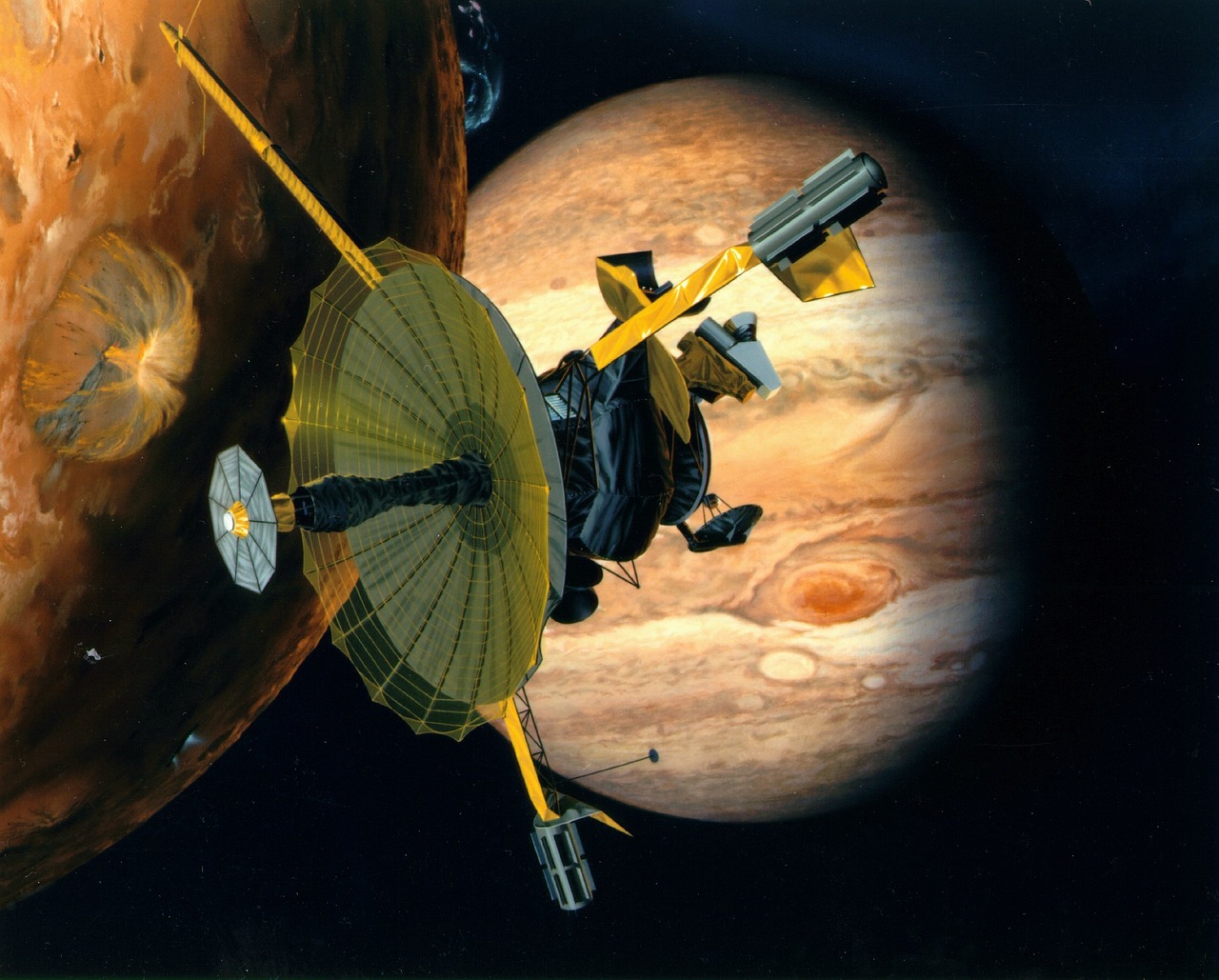
father of modern science,
This article explores the remarkable life of Galileo Galilei, his contributions to science, and the profound impact he had on the Scientific Revolution, shaping modern scientific thought.
Galileo Galilei was born in Pisa, Italy, in 1564. His early education laid the foundation for his revolutionary ideas, blending mathematics, physics, and philosophy.
Galileo's contributions to science include the development of the telescope and his pioneering work in astronomy, which challenged prevailing beliefs and advanced the understanding of the cosmos.
The invention of the telescope allowed Galileo to make groundbreaking astronomical observations, including the moons of Jupiter and the phases of Venus, fundamentally altering the perception of the universe.
Galileo's discovery of Jupiter's four largest moons provided critical evidence against the geocentric model, supporting the heliocentric theory proposed by Copernicus.
The observation of Venus's phases demonstrated that it orbited the Sun, further validating the heliocentric model and challenging the long-held geocentric view of the cosmos.
Galileo's conflict with the Catholic Church exemplifies the tension between science and religion during the Scientific Revolution, ultimately leading to his trial and condemnation.
Galileo's legacy endures through his contributions to modern science, influencing generations of scientists and laying the groundwork for future discoveries in physics and astronomy.
Galileo is often referred to as the father of modern science, with his methodologies and emphasis on observation and experimentation shaping the scientific method.
So, what exactly makes Galileo the "father of modern science"? Well, it boils down to a few key principles he championed that still resonate in scientific inquiry today:
- Empirical Evidence: Galileo believed in the power of observation and data collection. He showed that the universe could be understood through careful study rather than solely through philosophical reasoning.
- Experimental Method: He emphasized the importance of experiments to test hypotheses, which laid the groundwork for the scientific method we use today.
- Mathematical Descriptions: Galileo argued that mathematics was the language of nature, allowing scientists to describe and predict natural phenomena accurately.
His work didn't just stop with his own discoveries; it ignited a spark that led to a revolution in scientific thought. Think about it: before Galileo, many accepted the geocentric model of the universe, which placed Earth at the center. His findings challenged this view and paved the way for a new understanding of our place in the cosmos.
Moreover, Galileo’s insistence on questioning established norms inspired future scientists, including the likes of Isaac Newton, who built upon his foundational work. Newton's laws of motion and universal gravitation were, in many ways, extensions of the principles Galileo had laid out. It's fascinating to think about how one person's courage to speak out against the status quo could lead to monumental shifts in our understanding of the universe!
Galileo's courage in advocating for scientific truth inspired countless thinkers and scientists, including Isaac Newton, who built upon his foundational work to further advance scientific knowledge.
Q: Why is Galileo considered the father of modern science?
A: Galileo is considered the father of modern science due to his pioneering use of the scientific method, emphasis on empirical evidence, and significant contributions to physics and astronomy.
Q: What were some of Galileo's key discoveries?
A: Some of Galileo's key discoveries include the four largest moons of Jupiter, the phases of Venus, and the law of falling bodies, which challenged existing scientific beliefs.
Q: How did Galileo's work influence future scientists?
A: Galileo's methodologies and emphasis on observation and experimentation laid the groundwork for future scientists, including Newton, who expanded on his ideas to develop modern physics.

with his methodologies and emphasis on observation and experimentation shaping the scientific method.
Galileo Galilei is often hailed as the father of modern science, a title that reflects his profound influence on the methodologies that shaped scientific inquiry. His approach was revolutionary; he shifted the focus from philosophical speculation to empirical observation and experimentation. Imagine a world where science was merely a collection of ideas, untested and unverified. Galileo burst onto the scene like a comet, illuminating the dark sky of ignorance with his insistence on evidence-based conclusions.
Before Galileo, much of the scientific thought was steeped in ancient traditions and philosophical reasoning. The Aristotelian view of the cosmos reigned supreme, and many accepted these ideas without question. However, Galileo's work marked a significant departure from this norm. He emphasized the importance of direct observation and systematic experimentation. For instance, he didn't just theorize about the laws of motion; he tested them by rolling balls down inclined planes and measuring their speeds. This hands-on approach laid the groundwork for what we now know as the scientific method.
The scientific method, as we understand it today, is a structured process that involves making observations, forming hypotheses, conducting experiments, and drawing conclusions. Galileo's insistence on this framework was revolutionary. He believed that to understand the universe, one must first observe it closely and then test ideas through experimentation. This was not just a minor tweak to existing methods; it was a fundamental shift in how knowledge was pursued. His methodologies can be summarized in the following key principles:
| Principle | Description |
|---|---|
| Observation | Collecting data through direct sensory experience. |
| Experimentation | Testing hypotheses through controlled experiments. |
| Replicability | Ensuring experiments can be repeated to verify results. |
| Mathematics | Using mathematical principles to describe natural phenomena. |
Galileo's legacy is not merely in his discoveries but in the way he approached science. He encouraged future generations of scientists to question established norms and seek answers through rigorous testing. His work inspired the likes of Isaac Newton, who built upon Galileo's principles to further develop the laws of motion and universal gravitation. This ripple effect transformed scientific inquiry into a disciplined and structured endeavor.
In essence, Galileo's methodologies and emphasis on observation and experimentation did not just shape the scientific method; they revolutionized it. They paved the way for a future where science would be based on facts rather than beliefs, where the universe could be understood through careful study rather than ancient texts. His courage to challenge the status quo serves as a beacon for all aspiring scientists, reminding us that the pursuit of knowledge is an ongoing journey, one that requires both curiosity and integrity.
- What was Galileo's most significant contribution to science?
Galileo's most significant contribution was his development of the telescope and his subsequent astronomical discoveries, including the moons of Jupiter and the phases of Venus, which challenged the geocentric model of the universe.
- How did Galileo's work influence modern science?
Galileo's emphasis on observation and experimentation laid the foundation for the scientific method, influencing countless scientists and shaping modern scientific inquiry.
- What was Galileo's conflict with the Catholic Church about?
Galileo's support for the heliocentric model, which placed the Sun at the center of the universe, contradicted the Church's geocentric view, leading to his trial and condemnation.
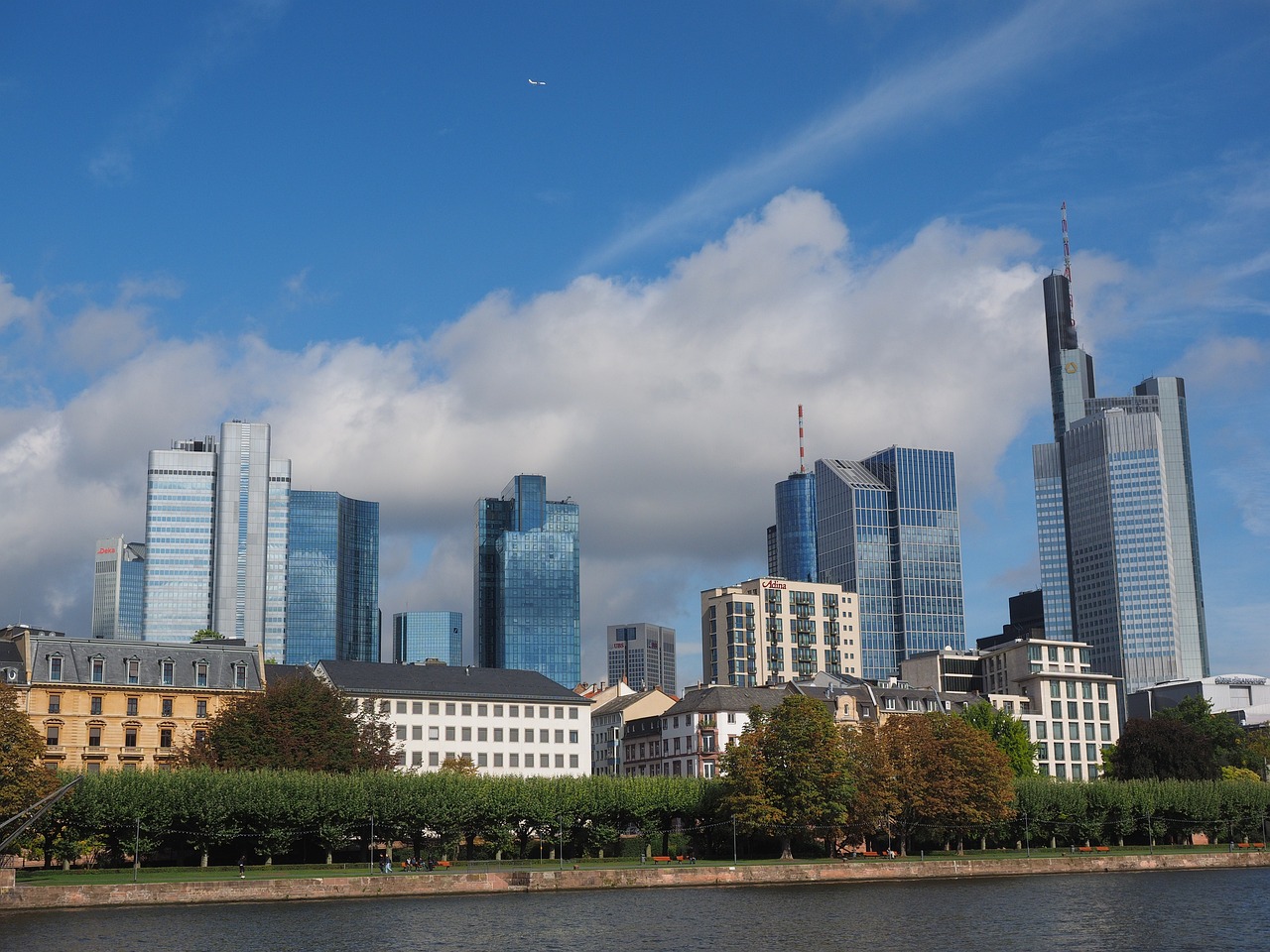
Inspiration for Future Thinkers
Galileo Galilei's relentless pursuit of truth and his unwavering commitment to scientific inquiry have left a profound legacy that continues to inspire future generations of thinkers. Imagine a world where the very fabric of knowledge is questioned and redefined; this was the world Galileo inhabited. His courage to challenge the status quo and advocate for the heliocentric theory not only transformed astronomy but also ignited a spark in the hearts and minds of countless scientists who followed in his footsteps.
One of the most significant aspects of Galileo's influence is his methodological approach to science, which emphasized observation and experimentation. This was revolutionary at a time when many relied solely on philosophical reasoning or ancient texts. Galileo's insistence on empirical evidence laid the groundwork for what we now recognize as the scientific method. His methods encouraged future thinkers to adopt a similar mindset, fostering an environment where questioning and testing became the norm. As a result, the scientific community began to flourish, leading to groundbreaking discoveries in various fields.
Notably, Galileo's work inspired luminaries such as Isaac Newton, who built upon the foundations laid by Galileo to develop his laws of motion and universal gravitation. Newton himself acknowledged the impact of Galileo’s findings, famously stating, “If I have seen further, it is by standing on the shoulders of giants.” This metaphor highlights how the discoveries of one generation can propel the next, creating a continuous cycle of innovation and understanding.
Moreover, Galileo's story is a testament to the importance of intellectual bravery. His trial and condemnation by the Catholic Church serve as a reminder of the challenges faced by those who dare to speak out against established beliefs. This struggle resonates with many modern thinkers who continue to confront societal norms in their quest for knowledge. The courage to stand firm in one’s convictions, even in the face of adversity, is a powerful lesson that transcends time and discipline.
In essence, Galileo Galilei is not just a historical figure; he is a beacon of inspiration for all who seek to explore the unknown. His legacy encourages us to embrace curiosity, challenge assumptions, and pursue knowledge with vigor. Whether in the realm of science, philosophy, or the arts, the principles he championed continue to resonate, reminding us that the pursuit of truth is a noble endeavor worth undertaking.
- What was Galileo's most significant contribution to science?
Galileo's most significant contributions include the development of the telescope and his astronomical observations, such as the moons of Jupiter and the phases of Venus, which challenged the prevailing geocentric model of the universe. - How did Galileo's work influence future scientists?
Galileo's emphasis on observation and experimentation laid the groundwork for the scientific method, influencing future scientists like Isaac Newton and shaping modern scientific inquiry. - What challenges did Galileo face during his lifetime?
Galileo faced significant challenges, including opposition from the Catholic Church, which ultimately led to his trial and condemnation for advocating the heliocentric theory. - Why is Galileo considered the father of modern science?
Galileo is often referred to as the father of modern science due to his pioneering methodologies and his emphasis on empirical evidence, which transformed the way scientific inquiry was conducted.
Frequently Asked Questions
-
Who was Galileo Galilei?
Galileo Galilei was an Italian astronomer, physicist, and mathematician born in 1564 in Pisa, Italy. He is often referred to as the father of modern science due to his pioneering contributions to the scientific method and his groundbreaking discoveries in astronomy.
-
What were Galileo's major contributions to science?
Galileo made significant contributions including the development of the telescope, which allowed him to observe celestial bodies in unprecedented detail. His discoveries, such as the moons of Jupiter and the phases of Venus, provided crucial evidence supporting the heliocentric model of the universe.
-
How did the telescope change our understanding of the universe?
The invention of the telescope revolutionized astronomy by enabling Galileo to make detailed observations of the night sky. He discovered that Jupiter had four moons, which challenged the geocentric view of the universe and supported the idea that not everything orbits the Earth.
-
What was Galileo's conflict with the Catholic Church?
Galileo's support for the heliocentric model brought him into conflict with the Catholic Church, which upheld the geocentric view. His views led to his trial and condemnation in 1633, where he was forced to recant his findings and spent the rest of his life under house arrest.
-
What is Galileo's legacy in modern science?
Galileo's legacy is profound; he is credited with laying the groundwork for modern physics and astronomy. His emphasis on observation and experimentation established the scientific method, influencing countless scientists, including Isaac Newton, who built upon his work.
-
Why is Galileo considered the father of modern science?
Galileo is considered the father of modern science because of his innovative approach to scientific inquiry, which emphasized empirical evidence and systematic experimentation. His methods set the stage for future scientific advancements and shaped the way we understand the natural world.
-
How did Galileo inspire future scientists?
Galileo's courage to advocate for scientific truth, despite opposition, inspired generations of scientists and thinkers. His work encouraged others to question established beliefs and pursue knowledge through observation and experimentation, paving the way for major scientific breakthroughs.






